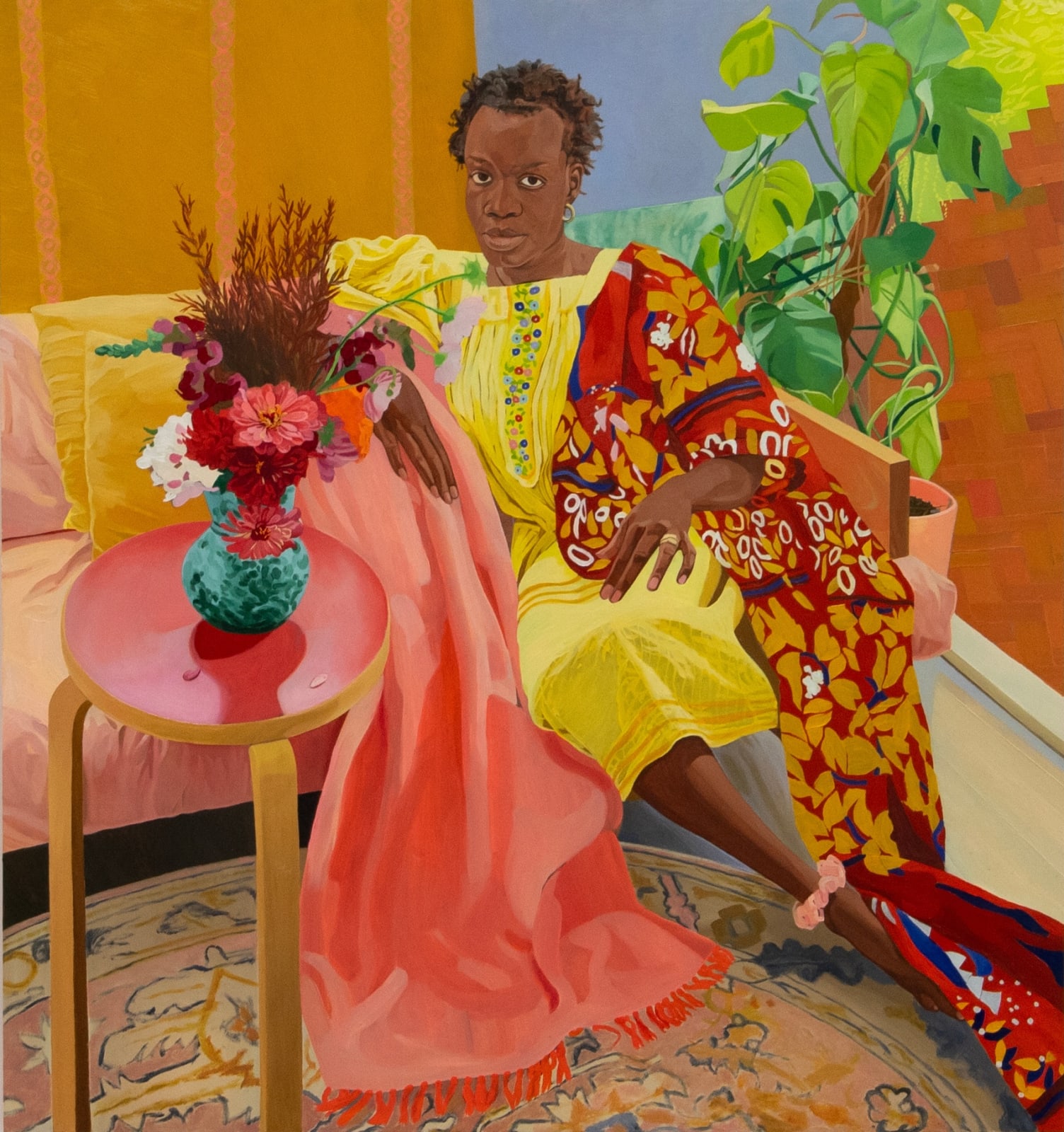Natasha Walsh
The Yellow Odalisque of Brunswick, 2024
oil on copper
53.4 x 50 cm / 72 x 68 x 3.5 cm (framed)
Sitter: Atong Atem
Reference: Henri Matisse, Yellow Odalisque (1937)
Sitter: Atong Atem
Reference: Henri Matisse, Yellow Odalisque (1937)
Atong Atem is an artist whose photos have always captivated me. Playing with her own representation through the unreal use of colour to create works that are startlingly fresh. When...
Atong Atem is an artist whose photos have always captivated me. Playing with her own representation through the unreal use of colour to create works that are startlingly fresh. When I asked her which work from art history she would like to reimagine together she came back straight away with Matisse's 'Yellow Odalisque', any of his Odalisques but in particular that one.
The Odalisque was another favourite genre for many male artists as it allowed them to play with the erotic and exotic simultaneously through this idea of the Orient. European women, nude or partially nude, bathed in silks in the lap of luxury in Islamic harems with African servants. Both the women and their servants are slaves to the harem and the owner of the painting.
Matisse took these scenes as an opportunity to go wild with colour, exploring his love of patterns from the French colonies in North Africa with the female subject an extension of this pattern like a vase. In the case of Yellow Odalisque, he had begun to modernise this genre with the female figure appearing in European clothing of the time. We actually know his subject for this painting, the exiled Russian Princess Helene Galtzine.
When I first met Atong in person in Brunswick, she spoke about the currency of identity and then questioned what authenticity actually means. She was interested in replacing the Moorish patterns in Matisse's work with African textiles, which are really important in her own work. She shared her shock at discovering that these textiles were introduced by the Dutch who had acquired them on their travels to Indonesia.
As she sat for me in her living room, and I made the preparatory sketch I knew this work was going to be an interesting challenge for me as it was the furthest away from my natural style. I needed to find a place between my own marks at this point in time and the much looser quick gestural marks of Matisse. In representing Atong I had to reflect on the few paintings Matisse made of women of colour in Harlem, New York. I didn't want to abstract her colouring as he had so that his subjects always look very European, but rather to celebrate her in a more naturalistic style while still simplifying colour and line to maintain the connection to the original we were re-imagining together.
The Odalisque was another favourite genre for many male artists as it allowed them to play with the erotic and exotic simultaneously through this idea of the Orient. European women, nude or partially nude, bathed in silks in the lap of luxury in Islamic harems with African servants. Both the women and their servants are slaves to the harem and the owner of the painting.
Matisse took these scenes as an opportunity to go wild with colour, exploring his love of patterns from the French colonies in North Africa with the female subject an extension of this pattern like a vase. In the case of Yellow Odalisque, he had begun to modernise this genre with the female figure appearing in European clothing of the time. We actually know his subject for this painting, the exiled Russian Princess Helene Galtzine.
When I first met Atong in person in Brunswick, she spoke about the currency of identity and then questioned what authenticity actually means. She was interested in replacing the Moorish patterns in Matisse's work with African textiles, which are really important in her own work. She shared her shock at discovering that these textiles were introduced by the Dutch who had acquired them on their travels to Indonesia.
As she sat for me in her living room, and I made the preparatory sketch I knew this work was going to be an interesting challenge for me as it was the furthest away from my natural style. I needed to find a place between my own marks at this point in time and the much looser quick gestural marks of Matisse. In representing Atong I had to reflect on the few paintings Matisse made of women of colour in Harlem, New York. I didn't want to abstract her colouring as he had so that his subjects always look very European, but rather to celebrate her in a more naturalistic style while still simplifying colour and line to maintain the connection to the original we were re-imagining together.



